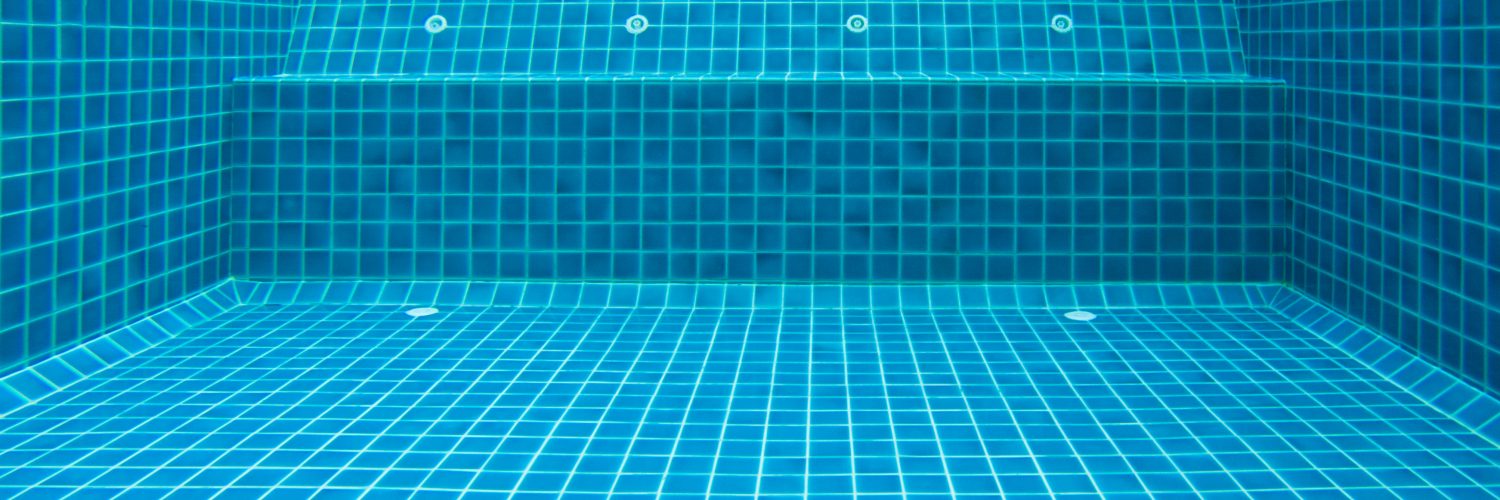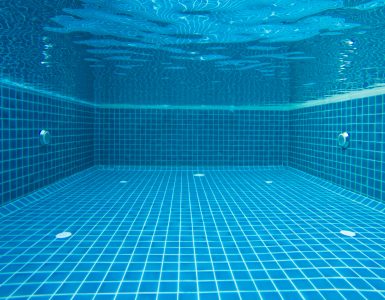Women with disabilities that do not allow them to stand unsupported, including women who are wheelchair-bound, often face significant challenges in performing the Mitzva of Tevila. Aside from the practical difficulties that must be overcome in order to immerse in the Mikva, there are also serious Halachic problems to consider, as this essay will explore. Part 2 of this series will clarify the methods by which Mikvaos can be made accessible in accordance with Halacha.
The Shulchan Aruch (Y.D. 198:31) rules:
One may not immerse in vessels. Therefore, if there is mud in the place in which she immerses, she should not stand [while immersing] on top of wooden vessels that can contract Tuma from their outside, nor on planks that are susceptible to Tumas Midras (Tuma transmitted by an impure person (such as a Nida or Zav) sitting, standing, or lying on the item), and not on any vessel that is susceptible to Tumas Midras. This is a decree on account of baths formed of vessels. If she violated [this restriction] and immersed, her Tevila is not considered [effective].
The prohibition to immerse “Al Gabei Keilim” – on top of vessels – is based on the comments of the Toras Kohanim on the verse, “Ach Ma’ayan u’Vor Mikvei Mayim –Only a spring, a pit, a pool of water” (Vayikra 11:36). Chazal expound: “Just as a spring is mainly in the ground, so too a pool must be mainly in the ground.” The Isur d’Oraisa derived from this Pasuk is to immerse in vessels, even if they were filled with water valid for immersion. Chazal also forbade immersion on top of vessels, even when not standing inside them, if the vessels can contract Tuma. This is because people may not distinguish between immersion within a vessel and immersion on top of a vessel. However, immersion on top of a vessel that does not contract Tuma is permissible.
There is a Machlokes Rishonim as to the parameters of this Isur, as we will discuss.
The Shulchan Aruch’s ruling is based on the Ra’avad (Ba’alei Nefesh, Sha’ar haTevila), as clarified by the Beis Yosef. The Beis Yosef explains that according to the conclusion of the Gemara in Maseches Nida (66b) there are two reasons for the Issur:
The first is Gezeiras Merchatzaos, in other words, the concern that people will think that one can immerse in a utensil that is susceptible to Tuma.[1] The second is the concern that a woman who is standing on vessels while immersing will be afraid of falling and will therefore not immerse properly.
In a case where Gezeiras Merchatzaos applies, the Tevila is invalid even Bedi’eved. However, if Gezeiras Merchatzaos is not applicable, such as if she stands on a vessel that is not of a sufficient size to contract Tuma, and the only concern is that she may be afraid of falling, Chazal did not disqualify her Tevila Bedi’eved if it was clear that she immersed properly (see Taz ibid. 31).
The Rosh has a more stringent view. Whereas the Ra’avad validates immersion while standing on earthenware vessels, since they do not contract Tumas Midras, the Rosh invalidates it even Bedi’eved. However, the Tur’s understanding is that the Rosh would validate the Tevila Bedi’eved.[2]
The Rambam (Hilchos Mikvaos 1) rules that it is forbidden to immerse while standing on earthenware vessels or a basket because the person may be afraid of falling. Elsewhere (ibid. 9) he rules simply that a person should not immerse on top of vessels. The Poskim assert that this second ruling forbids immersing while standing on any vessel, even those that would not cause a woman to be afraid of falling. However, they disagree about the reason for this ruling.
According to the Beis Yosef, the Rambam distinguishes between two scenarios. If all of the water passes over the vessel and the vessel has a receptacle (“Beis Kibul”), the water would be invalidated.[3] Chazal therefore decreed that one may not immerse while standing on any vessel, even if it does not have a receptacle. However, if all of the water does not pass over the vessel, Chazal did not forbid immersion because the water’s status of “Mei Ma’ayan” is not nullified. If the vessel has no receptacle, there would be no issue. Likewise, if a vessel that has a receptacle is placed in a position in which the water only passes outside it (for instance, if it was upside down), there is no concern of Gezeiras Merchatzaos. Therefore, it is only forbidden to immerse while standing on such a vessel due to the concern that the woman immersing will be afraid of falling and will not immerse properly.
The Beis Yosef suggests another explanation of the Rambam’s position. The Isur only applies to vessels that do not have a Beis Kibul, due to the concern that people will immerse while standing on vessels that do have Beis Kibul. But if a vessel with a Beis Kibul is placed upside down there is more room to be lenient than with a vessel that does not have a Beis Kibul at all. While people may not properly distinguish between vessels that do not have a Beis Kibul and those that do, the difference between a vessel placed in its normal upright position and one placed upside down is obvious, and they would not come to err. Therefore, it is only forbidden for a person to immerse while standing on an inverted vessel because of the concern that he may be afraid of falling and will not immerse properly.
The Shulchan Aruch rules like the Ra’avad[4] that a person should not stand upon anything that is susceptible to Tuma while immersing, and, if one did so, the immersion is invalid and must be repeated.
In spite of the above, there used to be a widespread custom to fasten wooden planks to Mikvaos, either as steps or as flooring to reduce the Mikva’s depth or to protect those immersing from the mud floor. Many Poskim were astonished by this practice in light of the Halachos delineated aboveandattempted to justify it in several ways:
- The Issur of attaching steps described by the Ra’avad and Rashba only applies to a ladder that was assembled for use outside of the Mikva and therefore attained the Halachic status of a Kli before it was affixed in the Mikva. However, if it was originally assembled for the purpose of affixing it in the Mikva, it does not have a statusof Kli and is considered part of the structure of the Mikva, even before it is placed in the Mikva, and does not contract Tuma. (See the Shach ibid. 45 and Sidrei Tahara[5] ibid. 63 citing the Maharam Padua.)
- There is a distinction between steps that are designed to be leaned upon that are susceptible to Tumas Midras and would invalidate a Tevila and steps that are intended only to be stepped upon, which are not susceptible to Tumas Midras (see the Shach ibid. and the Shu”t Sh’eiris Yosef[6] 60).
- The Taz (ibid. 31) disagrees with these answers and contends that the Halacha does not follow the Ra’avad and the Shulchan Aruch, but rather it follows the Rosh and Rash who hold that the reason for the Issur is not Gezeiras Merchatzaos but other issues that do not apply to planks of wood.
Regarding Tevila while seated in a chair, the Chid”a wrote in Birkei Yosef (Shiyurei Bracha 7):
Regarding a twelve-year-old girl who immersed for Dam Besulim. Since the Mikva was deep, they took a four-legged chair and placed it in the Mikva so that she should stand on top of it for the immersion.. One should rebuke the women so that they do not do this again. However, with regard to our case, since she has already immersed, there is
[room to]be lenient Bedi’eved and she does not need to immerse again. Shu”t Zera Avraham[7] (Y.D. 20).
The Birkei Yosef implies in his response that the reason to be lenient Bedi’eved is due to a combination of factors. First, the Rambam and Rosh argued with the Ra’avad and held that Gezeiras Merchatzaos is not the reason for the Issur. The single reason to forbid Tevila while standing on vessels is the concern that she will be afraid and not immerse properly. Therefore, if the chair was secure so that it would not move during the Tevila, there would no longer be reason for concern that she would not immerse properly and one could be lenient Bedi’eved. A second factor in this case was that the girl had not yet reached menarche.
In any case, mei’Ikar haDin, and certainly according to the Shulchan Aruch, Tevila on top of a chair is invalid. This is also stated by the Noda b’Yehuda (Tinyana Y.D. 138):
Regarding the very deep Mikva in which women were afraid to immerse [so] they took a chair and stood it in the Mikva and tied it with ropes so that they could stand on the chair when they would immerse: It was correct to rebuke them. Though there was room to find a leniency based on one argument advanced by the Beis Yosef to explain the opinion of the Rambam …and the Taz (198) relied upon that argument to permit the use of planks. Nonetheless, we should not add to the leniency invoked for the planks, for in the case of the planks there are several arguments to permit. However, with regard to [standing on] the stool while immersing which is explicitly prohibited by the Mishna in the fifth chapter of Mikvaos, we cannot rely on a peripheral argument to permit it. He should reprimand [those in question] and instruct that the chair be immediately removed from the Mikva.
Certainly, Mikvaos should be designed so that the Tevilos conducted there satisfy all opinions. However, the case of a woman with a disability is clearly a Sha’as haDechak as there is no alternative but to rely on [valid] leniencies in order to accomplish Tevila. It is therefore important to clarify how to ensure that the Mikvaos are accessible in the best possible manner. The second part of this series will address this issue.
We will conclude with a brief discussion of another solution that may be relevant in some cases: May the friends of the woman immersing hold her hand to assist her in getting in and out of the Mikva and during the Tevila?
The Shulchan Aruch (ibid. 28) rules:
Her friend should not hold her hand during the Tevila, unless [she holds it] loosely so that the water accesses the place where her hand grasps. If she washed her hands first, it is permissible, for the liquid on her hands connects to the water of the Mikva.
This Halacha is based upon the Mishna in Mikvaos (8:5):
If a person held on to another man or to vessels and immersed them, they remain impure; but if he had washed his hand before in the water, they become Tahor. R’ Shimon says he should hold them loosely so that water may enter into them.
The Rishonim disagree as to the explanation of the Mishna. According to the Rambam, the opinion of the Tana Kama (which is the Halacha) is that if one grasps a person and immerses them, the Tevila is invalid because of Chatzitza, even if he did not hold him tightly. The Tevila is only valid if he wet his hands beforehand (and then it is valid even if he holds the person tightly).
According to the Rashba, if a person wets his hands beforehand, he may immerse somebody even when holding tightly. If he holds loosely, the Tevila is valid even if he hadn’t wet his hands first. The Shulchan Aruch rules like the Rashba, but the Poskim contend that one should be concerned for the opinion of the Rambam and should not hold the person even loosely without wetting his hands beforehand.
Therefore, if a woman holds her friend tightly during Tevila it is invalid unless she wet her hands prior to entering the water. According to the Shach (ibid. 36), we should not permit things that have been customarily considered forbidden, and since Chazal only relied Bedi’eved on wetting hands prior to the Tevila, one should only be lenient if the woman cannot stand without assistance. However, the Poskim also note that the Shulchan Aruch implies that it is permissible l’Chatchila (Sidrei Tahara 57 and Taz 27). In spite of this, we are not lenient unless there is no other choice.
The manner of wetting the hands is subject to dispute. It is accepted l’Halacha that the supporting woman should stand in the water and wet her hands. With one hand, she should hold the woman doing the Tevila outside of the water, and then she should stretch out her other hand below the water and remove her upper hand.
l’Chatchila, she should hold the woman doing the Tevila with a medium-strength hold, but if there is no other way, she can hold her tightly and loosen her hold at the moment of Tevila itself. Bedi’eved, if she only washed her hands with tap water and the woman who did Tevila has already gone home, there is room to be lenient.
Someone who is disabled but is able to go into
the Mikva on her own if she holds on to the railing should ideally let
go of the rail while immersing. If she is unable to do so, she should hold the
railing as lightly as possible during Tevila.
[1] [Editor’s Note: Rashi ibid. explains that since it was common to sit on ledges made from earth in baths, one might think that it is permitted to immerse in earthenware vessels if women were allowed to immerse in Merchatzaos (baths). This decree extended to immersion while standing on top of any vessel that is susceptible to Tuma.]
[2] See the Beis Yosef (ibid.) and the Gra (31) who concurs.
[3] [Editor’s Note: Water that is in a container is considered Mayim She’uvim, not Mei Ma’ayan, and is invalid for Tevila.
[4] The Rashba and Rabenu Yerucham also concur with the Ra’avad.
[5] R’ Elchanan Ashkenazi (1713-1780), Rabbi of Danzig, Poland
[6] R’ Yosef Reizin (d. 1885), Rabbi of Telz and Slonim
[7] R’ Avraham Yitzchaki (1661-1729), Rishon l’Tzion (Yerushalayim) 1715-1722.














